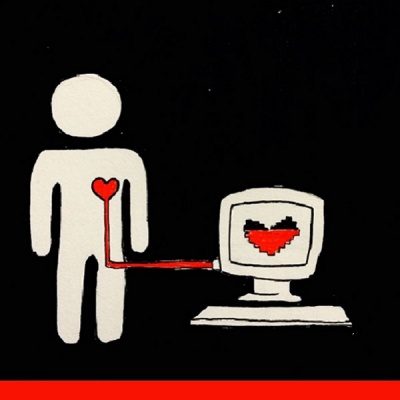HOW TO ROMANCE A HUMAN
BATS Theatre, The Propeller Stage, 1 Kent Tce, Wellington
22/02/2016 - 25/02/2016
NZ Fringe Festival 2016 [reviewing supported by WCC]
Production Details
The robotic automation of jobs threatens the livelihoods of millions worldwide. The first unmanned factory in China replicated the output of 650 hundred human beings, while requiring only the maintainance of 20 fleshbags. Not even creative jobs are safe from robo-redundancy with programs such as Iamus jeopardizing composers.
With the imminence of machine dominance, our only bastion against utter assimilation seems to be the sanctity of human love and connection. We assume.
AI=How To Romance a Human is a data-driven speculation of a not too distant future where “Online Dating” and a “Love Machine” have a whole new meaning. This production processes the personal to see if hardware can become compatible with romance. if Artificial Intelligence achieves Artificial Intimacy?
BATS Theatre – The Propeller Stage, 1 Kent Tce, Te Aro, Wellington
6:30pm Feb 22-25 (60 min)
BOOKINGS: bats.co.nz TICKETS: $16/$13/$12
Theatre ,
What we want v what we get ….
Review by Shannon Friday 23rd Feb 2016
How to Romance a Human is a series of vignettes that attempts to create an impression of the stages of love and mis-match in expectations that can complicate relationships. The show trades a single comprehensive storyline for several explorations of coupling off: an examination of moments that puts the focus on the universal rather than character-specific stories. It’s the difference between You’ve Got Mail and Valentine’s Day.
Some storylines do recur, to allow multiple glimpses into a relationship. For example, an unnamed isolated man (Liam Kelly) desperately tries to create an emotional bond with his sex-bot (Adeline Shaddick) that she just isn’t programmed to deliver.
Meanwhile, in Wellington, a company CEO delivers a Steve Jobs-esque new product pitch for couple-bots. Couple-bots do more than service one’s sexual needs; they can have entire relationships. Prototype couple-bots Theo (an uncannily mechanical Keegan Bragg, all slightly hesitant and distinct movements) and Grace (Ruby Hansen, who plays Grace as basically human) are about to be released into the wilds of Wellington for a 6-month test drive with each other.
Interspersed are some one-off scenes, like a scene in the park between obsolete couple-bots Watson and Daisy (also Bragg and Hansen), complete with 2001: A Space Odyssey robot ‘singing’, dubbed to the speaker system and familiar to anyone who spent their childhood with a Teddy Ruxpin. I’m totally impressed with this scene’s inclusion in the show; so often shows about romance focus exclusively on the meet-and-greet period (think any Meg Ryan movie ever), that the ending gets ignored. It deepens the show; showing what could be the reward for finding someone whose systems are compatible. And it has a great visual pun at the end.
The vignette format allows for the company to play with different modes of acting and representation. While the man/sex-bot story plays out with simple realism, other scenes make the ‘game’ of the scene more transparent. For example, as couple-bots Theo and Grace fight — their arguments reduce to a single line of dialogue — the other actors push them together like in the improv ‘Moving Statues’ game. It’s the desires of the moment versus deep programming, ingeniously staged.
For all its ambition, How to Romance a Human is a very young show, and I sometimes see the learning curve at play. For me, How to Romance a Human works best when the acting challenges are transparent, allowing me to reflect on the pseudo-mechanical ways we operate as theatre makers – or, for those who aren’t in theatre, the way our unconscious programming can determine how we act in our relationships.
A late vignette in which Grace tries to seduce an audience member with a poem made entirely from sappy song lyrics rings totally true. Hansen’s Flight-of-the-Conchords-esque, deadpan but earnest delivery showcases both the challenge of taking runaway feelings seriously, and also how truly meaningful everything feels when you think you’re in love.
When the acting challenges aren’t transparent, the acting gets really broad and unconvincing, such as Kelly’s foot-stompy, accelerated ‘frantic’. Similarly, Shaddick’s human/cell phone romance has a tender first scene, in which a stranded young woman talks to a Siri-like companion in her cell phone. Kelly provides the ‘voice’ of Siri, all delicate and expression piano plinks played live onstage: a musical R2-D2. This tender setup is let down by a final scene that fails to communicate either sensuality or emotional connection, as Shaddick writhes on the floor amidst a sea of old-style video game cartridges. Some more concrete tasks, like blowing delicately on the video game cartridges or a musical response to the caresses, would create a distinct impact instead of letting the romance fizzle.
And there’s some basic convention work that needs to be clarified. Each actor plays multiple characters, but there’s not a lot of clear signposting, either in terms of costume or early scene choices, to indicate whether the person we’re seeing is someone new or someone we’ve met before. As a result, I spend the first minute of each scene trying to figure out who I’m watching to contextualize the action. There’s also some inconsistency in the spaces — characters not agreeing on where imaginary things are in the space — that adds to my confusion.
Still, I find myself identifying pretty consistently all the way through the show with the different characters and situations, including the robots. The programme indicates a looming dread about human’s impending obsolescence: what happens when robots can create the impression of responding to our emotions, live our lives for us? But I take away from the show a sense that no matter the participants, human or mechanical, the mis-match in expectations about what we think we want from a relationship from what we get, will always cause heartache amidst our joy.
Copyright © in the review belongs to the reviewer





Comments